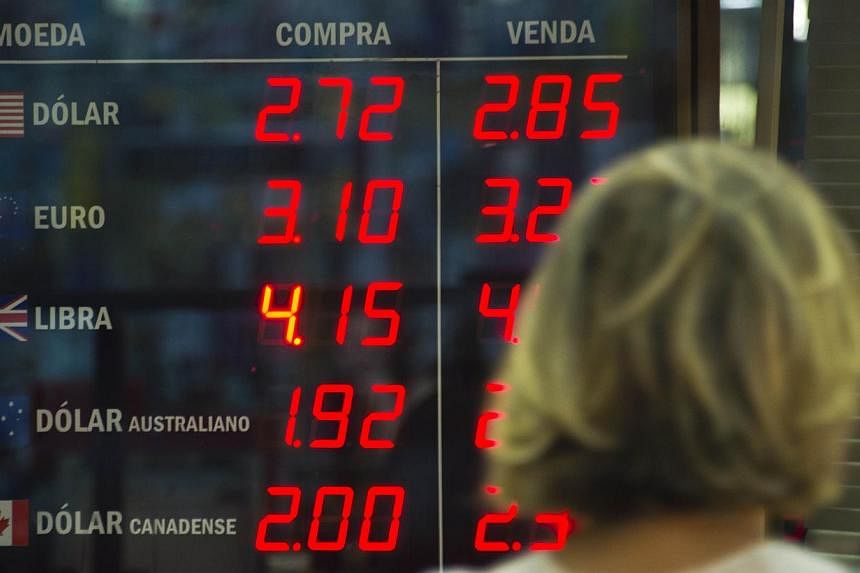During the early years of the global financial crisis, exchange rates were the least interesting part of the macroeconomic debate. A French proposal in 2011 for a sweeping reform of the international monetary regime went nowhere. Today, the subject has become the focus of intense anxiety - and with good reason.
Currency wars are a reminder of the fragility of the process of globalisation. As one part of that process begins to appear unacceptably painful, demand for political intervention rises, and the entire system is at risk of beginning to unravel.
The expectation that interest rates in the United States will rise is driving up the value of the greenback, even as monetary easing in Japan and Europe is pushing down the yen and the euro. Over the past year, the euro has lost more than a fifth of its value relative to the US dollar, and there is no sign that the trend will reverse any time soon.
The euro's depreciation has been greeted with delight by Europe's business leaders. But in the US, where the dollar's gains are threatening to choke off economic recovery, officials at the Federal Reserve are expressing signs of concern.
The swing in exchange rates could have an impact that extends far beyond the short-term rebalancing of the global marketplace. US President Barack Obama is negotiating with Asian countries over the Trans-Pacific Partnership and with Europe over the Transatlantic Trade and Investment Partnership. The dollar's rapid rise will play into the hands of his protectionist critics in a hostile and increasingly obstructionist Congress. Indeed, surges in the dollar's value have long coincided with increased political pressure for trade protectionism. After all, the most obvious way to compensate for the apparent overvaluation of a country's currency is to impose import restrictions.
In the mid-1980s, the dollar's appreciating exchange rate undermined US competitiveness, inaugurating a period of rapid and painful de-industrialisation. At that time, the major competitive threat was from Japan, and American politicians faced intense pressure to respond. In 1985, the US Senate unanimously approved a resolution condemning Japan's unfair trade practices and called on then President Ronald Reagan to act to curb imports. This was followed by a Bill proposing a special levy on countries running large bilateral trade surpluses with the US. If anything, today's exchange-rate swings are likely to be more extreme and to last longer than the surge in the dollar's value in the 1980s or the volatility of the 1930s. Then, in the aftermath of the financial crash that triggered the Great Depression, countries competed to devalue their currencies.
The problem is what is known as the carry trade - a common financial strategy in which an investor borrows money in a currency subject to a low interest rate in order to buy assets in a currency subject to a higher rate. The interest-rate differential, often combined with high amounts of leverage, provides a profit when the loans are paid off.
When exchange rates are stable and predictable, the carry trade is relatively safe. But this is rarely the case. For starters, the practice has the tendency to push exchange rates further apart, as investors sell the currency in which they borrowed to make their purchases. This creates an incentive to take on more debt, because the real value of the loan is likely to be lower when the time comes to repay it.
The large corporate borrowers engaged in the carry trade consider themselves sophisticated investors, capable of predicting when exchange rates are about to reverse. Unfortunately, this only increases the risk, boosting the possibility of a sudden reversal as money pours back into the borrowed currency as they attempt to repay loans before the exchange rate soars to loss-generating levels. And hedging against such a reversal merely builds up risk elsewhere in the international financial system.
The dangers are very real. In the 1980s, governments responded to large exchange-rate swings through active intervention, intentionally driving down the dollar's value in 1985, only to try to stabilise it 18 months later. These initiatives served a political purpose - holding off the protectionists. But they also caused serious financial instability, contributing to a major stock market crash in October 1987.
There is one historical precedent that could serve as a model, should we be able to muster the political will to consider it. In the 1930s, economist John Maynard Keynes championed limits on the movement of capital in order to blunt the more damaging consequences of globalisation. The equivalent today would be to introduce regulations for the carry trade. Policymakers would do well to consider this option - before it is too late.
The writer is Professor of History and International Affairs at Princeton University, Professor of History at the European University Institute, Florence, and a senior fellow at the Centre for International Governance Innovation.
PROJECT SYNDICATE

